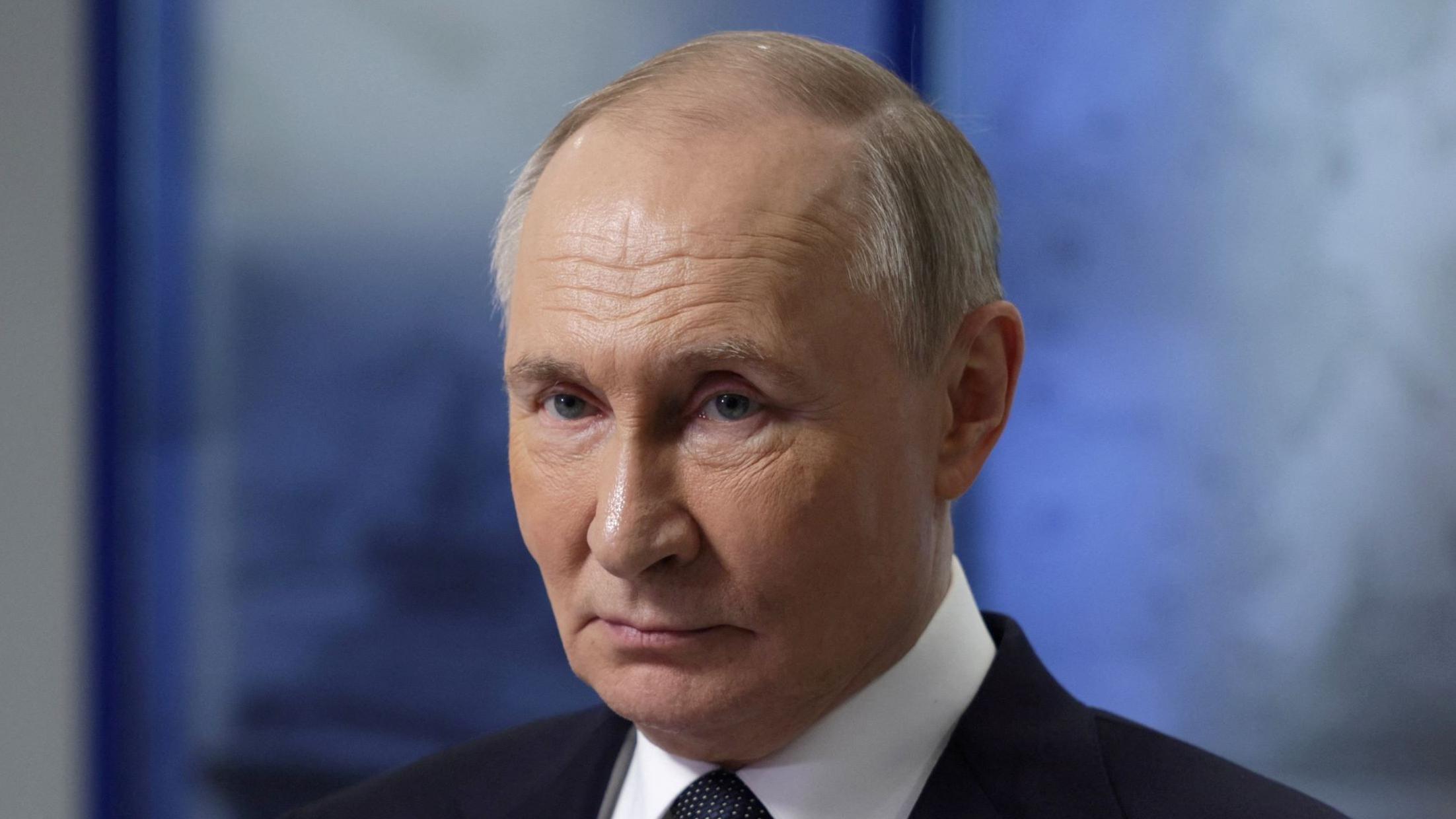Kremlin Escalates Rhetoric: Claims NATO Is ‘At War with Russia’ After Drone Incidents in Poland
The ongoing war in Ukraine took another dangerous turn this week, as the Kremlin declared that NATO is effectively “at war with Russia” following reports that multiple Russian drones were shot down over Poland. The statement has raised alarm across Europe and beyond, heightening fears of a wider conflict between Moscow and the Western alliance.
At the center of the controversy are drone incursions over Polish territory during a Russian strike on Ukraine, incidents that Polish officials described as a “large-scale provocation.” While Moscow denies intentionally targeting NATO member states, the events have drawn renewed scrutiny of Russia’s tactics, its aggressive rhetoric, and the risks of miscalculation in a war that already threatens to destabilize global security.
The Drone Incident in Poland
On September 10, Polish Prime Minister Donald Tusk confirmed that multiple Russian drones had violated Poland’s airspace during an attack aimed at Ukraine.
“The situation is serious, and no one doubts that we must prepare for various scenarios,” Tusk told reporters, emphasizing that Warsaw could not treat the incursion as an accident. Instead, he called it a deliberate provocation, underscoring the heightened tension between Moscow and NATO.
According to Polish military sources, the drones were intercepted by Polish and NATO defenses. Shortly afterward, NATO spokesperson Allison Hart confirmed the incident on X (formerly Twitter), stating:
“Numerous drones entered Polish airspace overnight and were met with Polish and NATO air defenses.”
The violations occurred during a wave of Russian drone and missile strikes on Ukraine. Warsaw immediately called for consultations under Article 4 of the NATO treaty, which allows member states to request emergency discussions when they believe their territorial integrity or security is under threat.
Russia’s Denial
Despite the evidence presented by Poland and NATO, the Kremlin has insisted that the drones were never intended for Polish targets.
Russia’s Ministry of Defence issued a statement claiming that its strike had successfully hit “all designated Ukrainian targets,” stressing that “no targets on the territory of Poland were planned for striking.”
The statement further argued that the maximum flight range of the UAVs used in the strike was approximately 700 kilometers, implying that any crossing into Polish territory may have been accidental or misrepresented.
“Nevertheless, we are ready to hold consultations with the Ministry of Defence of Poland on this matter,” the Russian side added, adopting a diplomatic tone even as its rhetoric elsewhere escalated.
Kremlin’s Escalation: NATO as an Enemy
In Moscow, officials seized on the incident to ramp up accusations against NATO. Kremlin spokesman Dmitry Peskov accused the alliance of being “de facto involved” in the Ukraine conflict.
“NATO is providing direct and indirect support to the Kyiv regime. It can be said with absolute certainty that NATO is fighting against Russia,” Peskov declared during a press briefing on September 15.
This marks one of the sharpest public escalations in Russia’s framing of the war. While Moscow has long criticized Western arms deliveries to Ukraine, openly branding NATO as a combatant pushes the rhetoric closer to suggesting direct confrontation.
Similar Violations in Romania
The drone incident in Poland was not isolated. Days earlier, the Romanian Defense Ministry reported that Russian drones had entered Romania’s airspace during overnight strikes on Ukraine.
Two Romanian F-16 fighter jets were scrambled to track the drones, but the objects later disappeared from radar.
Like Poland, Romania is a NATO member. These repeated airspace violations underscore the risk of escalation—not only intentional provocation but also accidental conflict if NATO defenses engage Russian assets.
Article 4 and NATO’s Response
Poland’s decision to request consultations under Article 4 of the NATO Treaty has added weight to the situation. Article 4 does not mandate military action but requires member states to consult whenever a nation’s security or territorial integrity is threatened.
Historically, Article 4 has been invoked sparingly, often in moments of crisis, such as:
-
2012: Turkey invoked Article 4 after Syrian shelling killed civilians near its border.
-
2014: Eastern NATO members called for consultations after Russia’s annexation of Crimea.
-
2022: Poland and Baltic states pushed for discussions following Russia’s full-scale invasion of Ukraine.
The fact that Warsaw has once again turned to Article 4 underscores the seriousness with which it views these airspace violations.
Why This Matters: Risks of Miscalculation
The drone incident raises urgent questions about the trajectory of the Ukraine war. While Russia claims the drones were not aimed at Poland, NATO allies see the incident as evidence of Moscow’s recklessness and provocation tactics.
Military analysts warn that such actions could lead to miscalculation. If a NATO member were to suffer casualties from a Russian strike, the situation could escalate to Article 5—the collective defense clause that considers an attack on one NATO member an attack on all.
Although NATO leaders remain cautious, the risk of accidental escalation looms large.
Global Reactions
The incident has sparked concern across Western capitals:
-
Washington: U.S. officials reaffirmed their “ironclad commitment” to NATO’s defense and warned Moscow against “reckless provocations.”
-
London: The UK called for a “measured but firm” response, emphasizing the need for unity within NATO.
-
Berlin: German leaders stressed that avoiding escalation must remain the priority but condemned Russia’s continued use of drones near NATO borders.
Meanwhile, Ukraine’s President Volodymyr Zelensky argued that the incidents highlight why NATO must bolster its air defense systems across Eastern Europe. “If Russia can terrorize Ukraine, it will not stop at our borders,” Zelensky said.
Russia’s Strategy: Testing NATO’s Resolve?
Some analysts suggest the drone incidents may be part of a calculated Russian strategy to test NATO’s response.
By pushing drones into allied territory without direct attacks, Moscow can probe NATO’s red lines while still maintaining plausible deniability. This “grey zone” tactic allows Russia to unsettle the alliance without triggering an outright military confrontation.
Others argue it may simply reflect the chaos of Russia’s war effort, with poorly programmed drones overshooting Ukrainian targets. However, given the timing and repeated nature of these incidents, few in NATO are willing to dismiss them as mere accidents.
Looking Ahead
The Kremlin’s claim that NATO is “at war with Russia” marks a new escalation in rhetoric, even if not in battlefield reality. Yet words matter, especially in a conflict already fraught with risk.
For NATO, the challenge is to balance deterrence and de-escalation—responding firmly to protect member states without stumbling into a broader war.
Poland’s invocation of Article 4 ensures that the issue will remain high on the alliance’s agenda in the coming weeks. For now, NATO leaders are united in condemning Russia’s aggression and supporting Ukraine. But as drone incursions continue, the question remains: how long can the line between war in Ukraine and direct conflict with NATO truly hold?

Adrian Hawthorne is a celebrated author and dedicated archivist who finds inspiration in the hidden stories of the past. Educated at Oxford, he now works at the National Archives, where preserving history fuels his evocative writing. Balancing archival precision with creative storytelling, Adrian founded the Hawthorne Institute of Literary Arts to mentor emerging writers and honor the timeless art of narrative.
